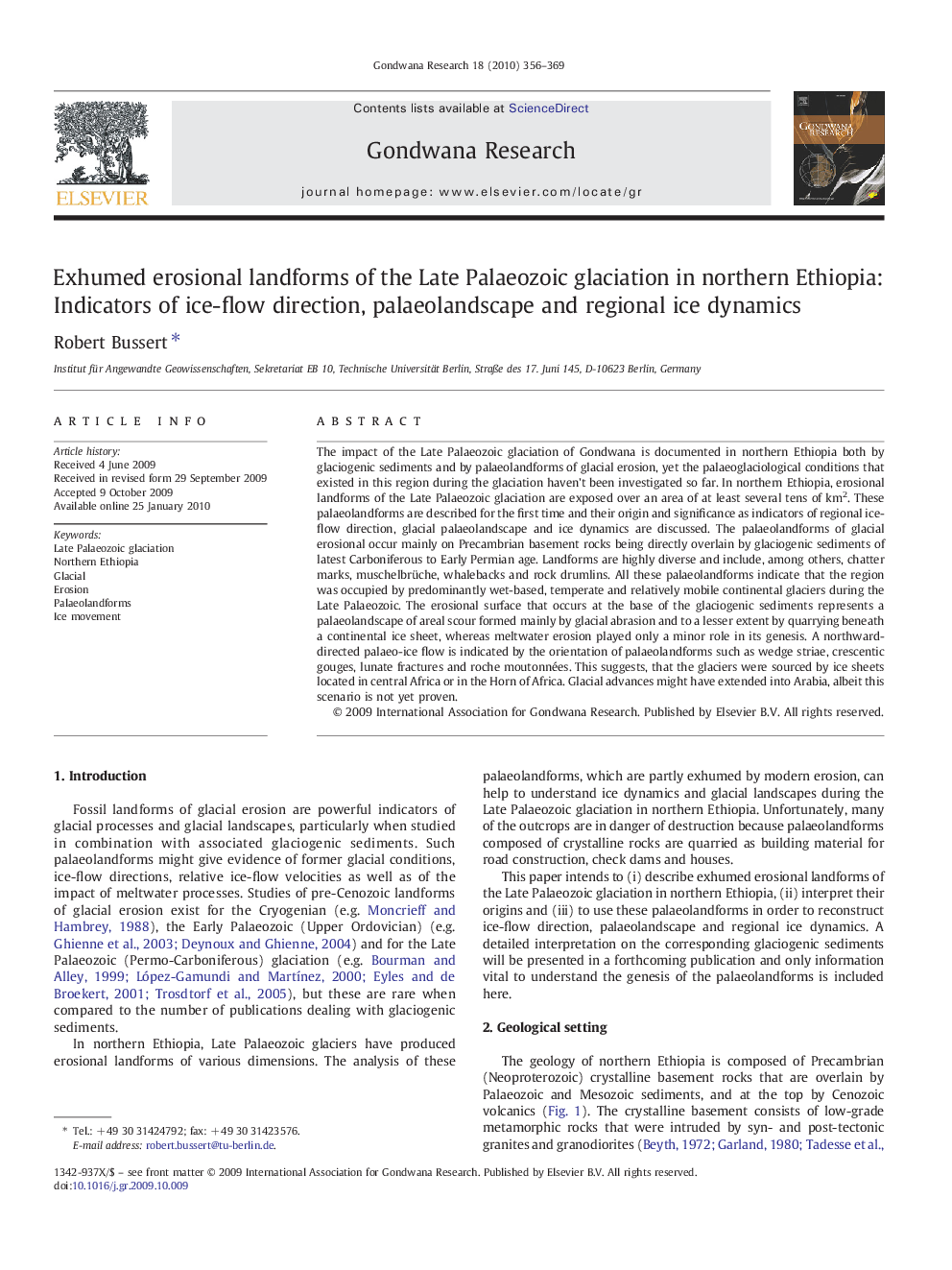| کد مقاله | کد نشریه | سال انتشار | مقاله انگلیسی | نسخه تمام متن |
|---|---|---|---|---|
| 4727063 | 1640148 | 2010 | 14 صفحه PDF | دانلود رایگان |

The impact of the Late Palaeozoic glaciation of Gondwana is documented in northern Ethiopia both by glaciogenic sediments and by palaeolandforms of glacial erosion, yet the palaeoglaciological conditions that existed in this region during the glaciation haven't been investigated so far. In northern Ethiopia, erosional landforms of the Late Palaeozoic glaciation are exposed over an area of at least several tens of km2. These palaeolandforms are described for the first time and their origin and significance as indicators of regional ice-flow direction, glacial palaeolandscape and ice dynamics are discussed. The palaeolandforms of glacial erosional occur mainly on Precambrian basement rocks being directly overlain by glaciogenic sediments of latest Carboniferous to Early Permian age. Landforms are highly diverse and include, among others, chatter marks, muschelbrüche, whalebacks and rock drumlins. All these palaeolandforms indicate that the region was occupied by predominantly wet-based, temperate and relatively mobile continental glaciers during the Late Palaeozoic. The erosional surface that occurs at the base of the glaciogenic sediments represents a palaeolandscape of areal scour formed mainly by glacial abrasion and to a lesser extent by quarrying beneath a continental ice sheet, whereas meltwater erosion played only a minor role in its genesis. A northward-directed palaeo-ice flow is indicated by the orientation of palaeolandforms such as wedge striae, crescentic gouges, lunate fractures and roche moutonnées. This suggests, that the glaciers were sourced by ice sheets located in central Africa or in the Horn of Africa. Glacial advances might have extended into Arabia, albeit this scenario is not yet proven.
Journal: Gondwana Research - Volume 18, Issues 2–3, September 2010, Pages 356–369